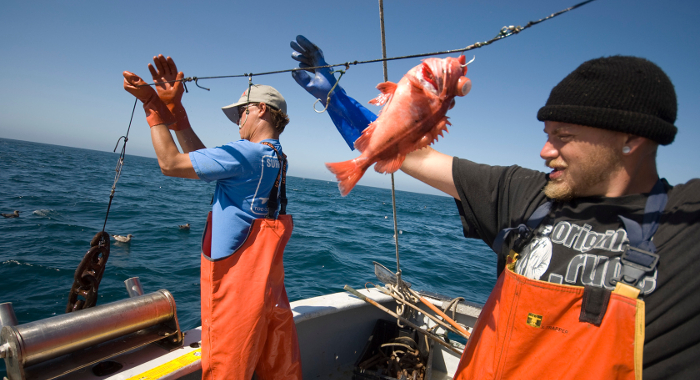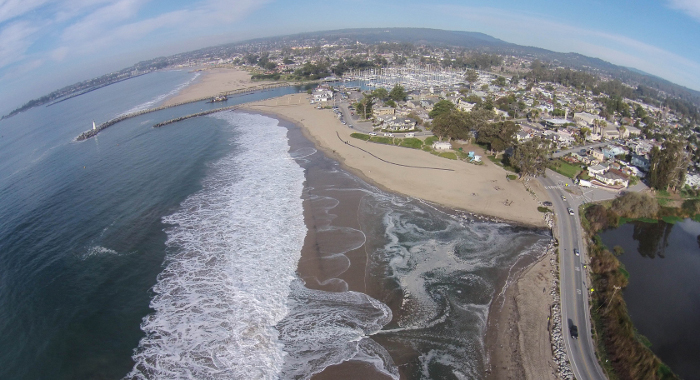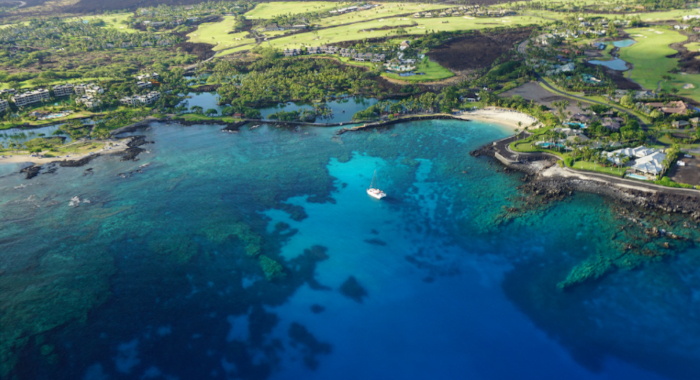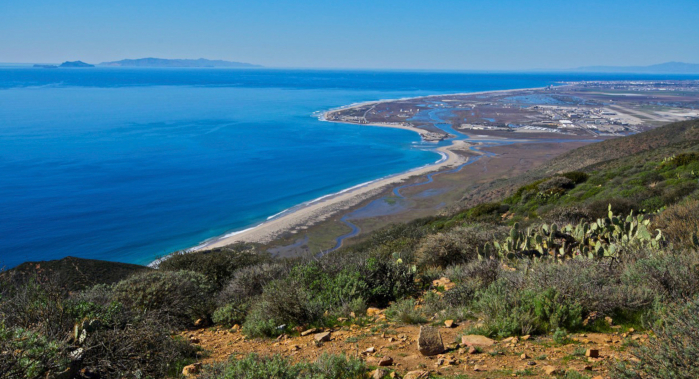The California Current is one of only four temperate upwelling systems in the world. Seasonal upwelling of nutrient-rich waters fuels a highly productive ecosystem, supporting biodiversity and fisheries that, along with coastal tourism, are a foundation of California’s economy.
Yet California’s coasts and oceans are also under increasing threat. Relatively few fisheries are managed based on robust scientific assessments, and more needs to be done to avoid overfishing and reduce bycatch. Plastics and other pollutants are pervasive. Climate change compounds these challenges. Ocean chemistry is changing. Sea levels and temperatures are rising – threatening important resources, biodiversity, and human populations.
Fortunately, the coastal and ocean ecosystems of California are bolstered by a network of marine protected areas and some of the most science-based marine policies in the world. Conservancy scientists look to build on those foundations by applying science and technology to enhance resilience of marine resources in the face of emerging threats.




Walter N. Heady, Brian S. Cohen, Mary G. Gleason, Joshua N. Morris, Sarah G. Newkirk, Kirk R. Klausmeyer, Hilary R. Walecka, Elizabeth Gagneron
Sea level rise presents a new challenge to coastal conservation. The authors quantified and mapped the vulnerability of habitats, imperiled species, and conservation lands to sea level rise throughout…Wolf CA, Young HS, Zilliacus KM, Wegmann AS, McKown M, Holmes ND, Tershy BR, Dirzo R, Kropidlowski S, Croll DA
Prior to eradication in 2011, non-native invasive rats were known to be active seed predators on Palmyra Atoll, Central Pacific Ocean. This paper reports on native and non-native tree and palm…Alexander C.A.D., F. Poulsen, D.C.E. Robinson, B.O. Ma , R.A. Luster
Management of the Sacramento River and Sacramento–San Joaquin Delta is one of California’s greatest challenges, requiring trade-offs between valued components that serve a multiplicity of…Jono R. Wilson, Serena Lomonico, Darcy Bradley, Leila Sievanen, Tom Dempsey, Michael Bell, Skyli McAfee, Christopher Costello, Cody Szuwalski, Huff McGonigal, Sean Fitzgerald, Mary Gleason
Climate change is amplifying threats to ocean ecosystems and marine fisheries worldwide. In order to respond appropriately in the face of these ocean changes, commercial and recreational…Wilson J. , McGonigal, H., Dempsey, T., Gleason, M., Rienecke, S.
Fisheries management in California is a complex, resource intensive process that is limited by funding and staff capacity. In this report, Conservancy scientists and colleagues identify ways in which…Serena Lomonico, Robert Jones, Torrey Johnson, Sarah Newkirk, Sarah Lummis, Kirk Klausmeyer, John Finger, Terry Sawyer, Richard James
Aquaculture is becoming an increasingly important global food source. With this growth comes urgent, unanswered questions about the interactions of aquaculture operations—both positive and…Mark D. Reynolds, Brian L. Sullivan, Eric Hallstein, Sandra Matsumoto, Steve Kelling, Matthew Merrifield, Daniel Fink, Alison Johnston, Wesley M. Hochachka, Nicholas E. Bruns, Matthew E. Reiter, Sam Veloz, Catherine Hickey, Nathan Elliott, Leslie Martin, John W. Fitzpatrick, Paul Spraycar, Gregory H. Golet, Christopher McColl, Scott A. Morrison
What if instead of buying habitat, conservationists could rent it when and where nature needs it most? The Conservancy is using predictive models of shorebird movements, data from the citizen science…Timothy C. Bonebrake, Christopher J. Brown, Johann D. Bell, Julia L. Blanchard, Alienor Chauvenet, Curtis Champion, I-Ching Chen, Timothy D. Clark, Robert K. Colwell, Finn Danielsen, Anthony I. Dell, Jennifer M. Donelson, Birgitta Eveng°ard, Simon Ferrier, Stewart Frusher, Raquel A. Garcia, Roger B. Griffis, Alistair J. Hobday, Marta A. Jarzyna, Emma Lee, Jonathan Lenoir, Hlif Linnetved, Victoria Y. Martin, Phillipa C. McCormack, Jan McDonald, Eve McDonald-Madden, Nicola Mitchell, Tero Mustonen, John M. Pandolfi, Nathalie Pettorelli, Hugh Possingham, Peter Pulsifer, Mark Reynolds , Brett R. Scheffers, Cascade J. B. Sorte, Jan M. Strugnell, Mao-Ning Tuanmu, Samantha Twiname, Adriana Verg´es, Cecilia Villanueva, Erik Wapstra, Thomas Wernberg , Gretta T. Pecl
Climate change is driving the largest global redistribution of the planet’s species since the ice age. Species redistributions present challenges for human well-being, environmental management…The Nature Conservancy, Matt Merrifield
Nearly half of the world depends on seafood for their main source of protein. In the Western and Central Pacific, where 60% of the world’s tuna is caught, illegal, unreported, and unregulated…Daniel Ovando, Dawn Dougherty, Jono R. Wilson
No-take marine reserves are a management intervention that can provide long-term fishery benefits. But, impacts of reserve implementation can negatively affect fishermen profits in the short term.…The Nature Conservancy, Jono Wilson
California fisheries, like the red abalone fishery, are facing increasing environmental variation and uncertainty due to climate change, complicating the sustainable management of commercial and…Szeptycki, L., E. Hartge, N. Ajami, A. Erickson, W. N. Heady, L. LaFeir, B. Meister, L. Verdone, J.R. Koseff
The drought in California rekindled interest in ocean desalination as a new and reliable water supply option; yet desalination is expensive, energy intensive, potentially emits greenhouse gases,…